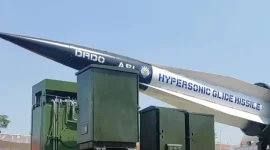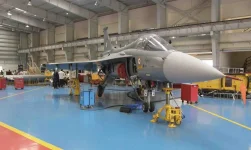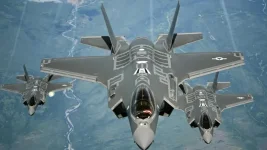- Views: 2K
- Replies: 5
In a significant move to enhance its military self-reliance, India is actively planning to establish a local facility for the maintenance, repair, and overhaul (MRO) of its Russian-made S-400 Triumf air defence systems.
Defence Secretary Giridhar Aramane confirmed the initiative, which is aimed at ensuring the long-term operational readiness of this critical military asset.
Alongside this development, he indicated that India may also consider acquiring additional S-400 units after the current delivery schedule is completed.
The S-400 is recognised as one of the world's most sophisticated long-range surface-to-air missile (SAM) systems, capable of neutralizing enemy aircraft, unmanned aerial vehicles (UAVs), and ballistic missiles from a distance of up to 400 kilometres.
In October 2018, India finalised a $5.43 billion agreement with Russia to procure five squadrons of the S-400 system, a decision made despite the risk of sanctions under the U.S. Countering America’s Adversaries Through Sanctions Act (CAATSA).
To date, three squadrons have been delivered and integrated into India's air defence network. The delivery of the final two squadrons, originally slated for 2024, has been rescheduled and is now expected to be completed by mid-2026 due to supply chain adjustments.
The proposed MRO facility is a cornerstone of India's strategy to reduce its reliance on foreign nations for crucial maintenance and support.
"Setting up an MRO facility for the S-400 in India will ensure operational readiness and reduce dependency on foreign support," stated a defence official.
This project is expected to involve a collaboration between Russia's original equipment manufacturer, Almaz-Antey, and established Indian defence public sector undertakings like Bharat Dynamics Limited (BDL), which specialises in missile systems, or Hindustan Aeronautics Limited (HAL).
Such a facility would handle routine maintenance, complex repairs, and future upgrades, aligning perfectly with the government's "Make in India" policy to foster a robust domestic defence industrial base.
The consideration for ordering more S-400 systems stems from India's evolving security landscape, including heightened military activities by China along the Line of Actual Control (LAC) and the increasing missile and drone capabilities of Pakistan.
"Once the current contract is fulfilled, we will evaluate the need for more squadrons based on threat assessments," the official added.
Reports indicate that India might procure an additional two to three squadrons to create a more comprehensive air defence shield over the subcontinent.
These new units could be integrated with India's indigenous radar and command-and-control systems, enhancing the interoperability of its multi-layered air defence network, which also includes systems like the homegrown Akash and the jointly developed Barak-8 missiles.





